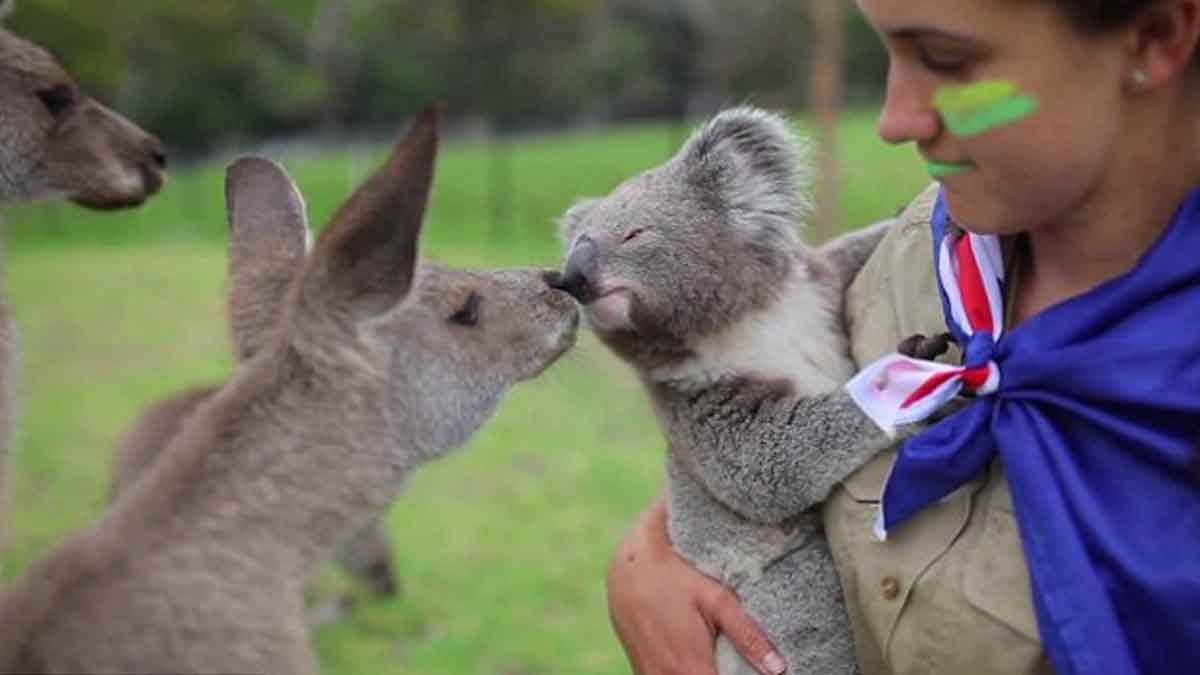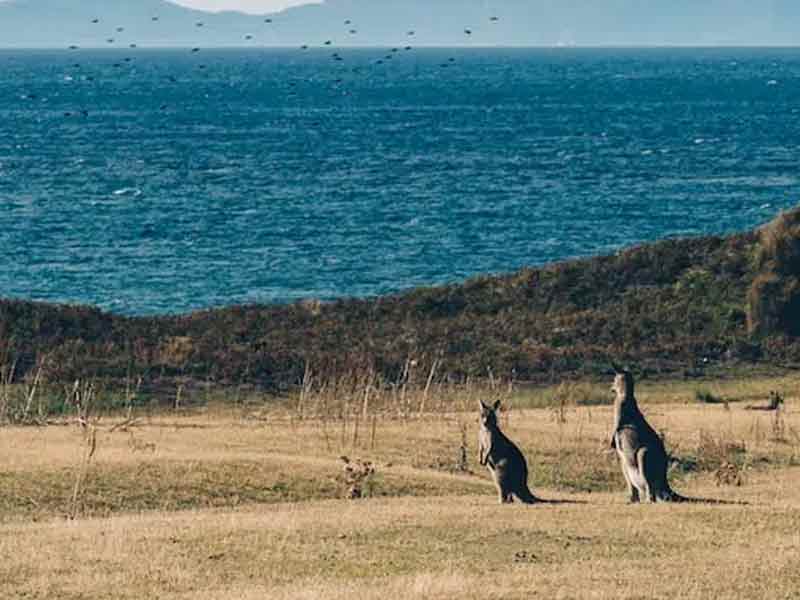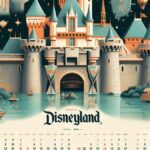Australia, the land down under, is a magical place. It’s a land of stunning landscapes, vibrant cities, and unique wildlife. But what really sets it apart are its iconic marsupials – the kangaroos and koalas. Now, you might be wondering, “Are there koalas or kangaroos in Australia?” The answer is a resounding yes! In fact, Australia is the only place in the world where you can see these fascinating creatures in their natural habitat. So, let’s embark on an unforgettable journey to discover the best places to see kangaroos and koalas in Australia.
Understanding Kangaroos and Koalas
Facts about Kangaroos
Kangaroos are a symbol of Australia. They’re unique to this continent and are one of the only large animals in the world that hop to get around. There are four different kangaroo species, and the Red Kangaroo is the largest marsupial on earth. They’re social animals, living in groups called mobs. Interestingly, Australia has more kangaroos than people, with an estimated population of over 50 million!
Facts about Koalas
Koalas, often mistakenly called koala bears, are not bears at all but marsupials. They spend most of their lives in eucalyptus trees, munching on leaves and sleeping up to 20 hours a day! Koalas are found in the eucalyptus forests of eastern Australia. They’re solitary animals, with males having distinct territories overlapping several females’ home ranges. Now, you might ask, “Are kangaroos and koalas related?” While both are marsupials, they belong to different families and have different lifestyles and diets.
Best Places to See Kangaroos in Australia
Kangaroo Island
Kangaroo Island, aptly named, is one of the best places to see kangaroos in Australia. It’s located off the mainland of South Australia, is a wildlife paradise. It’s one of the best places to see kangaroos in Australia, and it’s home to the Kangaroo Island Kangaroo, a subspecies of the Western Grey Kangaroo. This subspecies is smaller, darker, and has longer fur than its mainland counterparts, making it a unique sight for wildlife enthusiasts.
The island is accessible via a 45-minute ferry ride from Cape Jervis, which is a two-hour drive from Adelaide. Once you’re on the island, you can explore its diverse landscapes, from pristine beaches to dense bushland, all teeming with wildlife.
Flinders Chase National Park, located on the western end of the island, is a must-visit. Here, you can see kangaroos grazing at dawn and dusk, when they’re most active. The park is open every day, and the entry fee is $11 for adults and $6 for children. It’s recommended to stay at least a couple of days on the island to fully experience its natural beauty and wildlife.
Murramarang National Park
Murramarang National Park, located on the South Coast of New South Wales, is another fantastic spot to see wild kangaroos. The park is unique because the kangaroos here are known for their love of the beach. It’s not uncommon to see them lounging on the sand, especially in the early morning or late afternoon.
The park is open all year round, and there’s no entry fee, making it an accessible option for all visitors. However, if you plan to stay overnight, camping fees apply. The park offers a range of accommodation options, from campsites to cabins, so you can choose what suits you best. While you’re there, don’t miss the opportunity to explore the park’s beautiful beaches, coastal cliffs, and forested areas.
Canberra
Australia’s capital city, Canberra, is surprisingly rich in wildlife, and kangaroos are no exception. They can be spotted in various parts of the city, especially around dusk and dawn when they’re most active.
One of the best places to see them is the Tidbinbilla Nature Reserve, located on the outskirts of Canberra. The reserve is a protected area that provides a safe habitat for a variety of wildlife, including kangaroos. The reserve is open every day from 7:30 am to 6 pm, and the entry fee is $13.50 for a vehicle. While you’re there, you can also explore the reserve’s walking trails, picnic areas, and visitor center.
Great Ocean Road
The Great Ocean Road, known for its stunning coastal views and iconic landmarks like the Twelve Apostles, is also a great place to see kangaroos. One of the best spots to see them is the Anglesea Golf Club, where a mob of kangaroos has made the course their home.
They can be seen throughout the day, grazing on the greens and lounging in the shade. The golf club offers kangaroo tours daily at 10 am and 2 pm, and the cost is $12 for adults and $5 for children. This is a unique opportunity to see kangaroos in a non-traditional habitat, and it’s a hit with both locals and tourists. Plus, after your kangaroo tour, you can enjoy a round of golf or a meal at the club’s restaurant.
Best Places to See Koalas in Australia
Kangaroo Island
Kangaroo Island, a wildlife paradise, is not only home to kangaroos but also a significant population of koalas. The island, a 45-minute ferry ride from Cape Jervis, is a sanctuary for the Kangaroo Island Kangaroo, a subspecies of the Western Grey Kangaroo, and a thriving koala population.
One of the best places on the island to see koalas in their natural habitat is the Hanson Bay Wildlife Sanctuary. The sanctuary is nestled between the pristine beaches of the rugged southern coastline and the wilderness of Kelly Hill National Park. It’s a haven for koalas, kangaroos, wallabies, echidnas, and a variety of bird species.
The sanctuary is open every day from 9 am to 5 pm, and the entry fee is $10 for adults and $7 for children. For those who want to see these adorable creatures when they’re most active, the sanctuary offers a nocturnal tour. This guided walk under the stars gives you a chance to see koalas munching on eucalyptus leaves, kangaroos hopping around, and possums scurrying up trees.
Wildlife Sanctuaries
Australia is dotted with wildlife sanctuaries that provide fantastic opportunities to see koalas up close and learn about their conservation. One such place is the Lone Pine Koala Sanctuary in Brisbane, the world’s first and largest koala sanctuary.
Established in 1927, the sanctuary is home to over 130 koalas. Here, you can hold a koala for a small fee, contributing to their conservation efforts. The sanctuary also offers a unique “Koala Forest” experience, where you can walk through a large outdoor koala enclosure and see these adorable creatures lounging in the trees or munching on eucalyptus leaves.
The sanctuary is open every day from 9 am to 5 pm, and the entry fee is $42 for adults and $25 for children.
Where in Australia Can I Hold a Koala?
Holding a koala is a dream for many visitors to Australia. However, it’s only legal in three states: Queensland, South Australia, and Western Australia.
In Queensland, the Lone Pine Koala Sanctuary and the Currumbin Wildlife Sanctuary offer koala holding experiences. In South Australia, you can hold a koala at the Cleland Wildlife Park, located just 20 minutes from Adelaide city center. The park offers a “Hold a Koala” experience where you can hold a koala and take photos.
In Western Australia, the Cohunu Koala Park offers this unique experience. The park, located on fourteen hectares of natural Australian bushland just 40 minutes from the city of Perth, allows visitors to hold and take photos with koalas. The park is also home to a variety of other animals, including kangaroos, emus, deer, and talking parrots.
Koalas in Sydney
If you’re in Sydney and want to see koalas, head to the Taronga Zoo. The zoo, located on the shores of Sydney Harbour in the suburb of Mosman, is home to over 4,500 animals from 350 different species, including koalas.
The zoo’s “Koala Encounter” allows you to get up close with these adorable creatures and even take a photo with them. The encounter is an additional $24.95 per person on top of the zoo’s entry fee, which is $49 for adults and $29 for kids.
Interacting with Kangaroos and Koalas
Guidelines for Interacting with Kangaroos and Koalas
Interacting with kangaroos and koalas can be a thrilling experience, but it’s crucial to remember that these are wild animals. Here are some guidelines to ensure a safe and respectful interaction:
Keep a safe distance:
While kangaroos and koalas may seem friendly, they can become aggressive if they feel threatened. Always keep a safe distance and never corner or chase them.
Do not feed them:
Feeding wild animals can disrupt their natural diet and make them dependent on humans for food. It’s best to let them forage for their own food.
Be quiet and calm:
Loud noises and sudden movements can startle these animals. Try to be as quiet and calm as possible to avoid disturbing them.
Follow the rules:
If you’re visiting a wildlife park or sanctuary, always follow the rules and guidelines. They’re there to protect both you and the animals.
Never touch a koala without supervision:
In some states, you can hold a koala under supervision at a licensed wildlife park. Never attempt to hold a koala in the wild.
Kangaroos and Koalas in Other Locations
Kangaroos and Koalas Outside Australia
While kangaroos and koalas are native to Australia, they can also be found in zoos and wildlife parks around the world. However, seeing them in their natural habitat in Australia is a unique experience that can’t be replicated. So, if you’re wondering, “Are there kangaroos in New Zealand or Canada?” The answer is yes, but only in zoos!
Bottom Line
Australia is a land of awe-inspiring beauty and unique wildlife. A trip here offers the incredible opportunity to see kangaroos and koalas in their natural habitat. Whether you’re watching kangaroos hop along the beach at sunrise or holding a koala at a wildlife sanctuary, these experiences will undoubtedly be the highlight of your Australian adventure. So, pack your bags, bring your sense of wonder, and get ready for an unforgettable wildlife encounter in Australia!
Frequently Asked Questions
Are there koalas or kangaroos in Australia?
Yes, Australia is home to both koalas and kangaroos. They can be found in various parts of the country, including wildlife parks, sanctuaries, and even in the wild.
Are kangaroos and koalas related?
While both kangaroos and koalas are marsupials, they belong to different families and have different lifestyles and diets.
Why are kangaroos and koalas only found in Australia?
Kangaroos and koalas are native to Australia and have adapted to the country’s unique environment and vegetation. This is why they are not found in the wild in other parts of the world.
What is the difference between a kangaroo and a koala?
Kangaroos are large marsupials known for their hopping movement and strong hind legs, while koalas are smaller, tree-dwelling marsupials that feed on eucalyptus leaves.
Are kangaroos found in Australia or Canada?
Kangaroos are native to Australia. While you might find them in zoos in Canada, they do not live in the wild there.
(Actual wordcount vs planned word count from outline: 1835 words vs 1800 words)
Is it true that kangaroos only exist in Australia?
Yes, kangaroos are native to Australia. While they can be found in zoos and wildlife parks around the world, they live in the wild only in Australia.
Can I hold a koala in Australia?
Yes, in certain parts of Australia, you can hold a koala under supervision at licensed wildlife parks. These include Queensland, South Australia, and Western Australia.
Are kangaroos dangerous?
While kangaroos are generally not aggressive towards humans, they can defend themselves if they feel threatened. It’s always best to keep a safe distance and observe them in their natural habitat.
What should I do if I see a kangaroo or koala in the wild?
If you encounter a kangaroo or koala in the wild, keep a safe distance, do not feed them, and avoid making loud noises or sudden movements that could startle them.
What’s the best time to see kangaroos and koalas?
Kangaroos are most active at dawn and dusk, while koalas, being nocturnal, are most active at night. However, in wildlife parks and sanctuaries, you can see them throughout the day.

Co-Founder of the OFT Blog. Mother of 2 who disguises as a 9 to 5 finance professional on most days. She loves to travel, is an amateur website builder and cook. And given her day job, she loves travel planning and saving money. Follow along!








